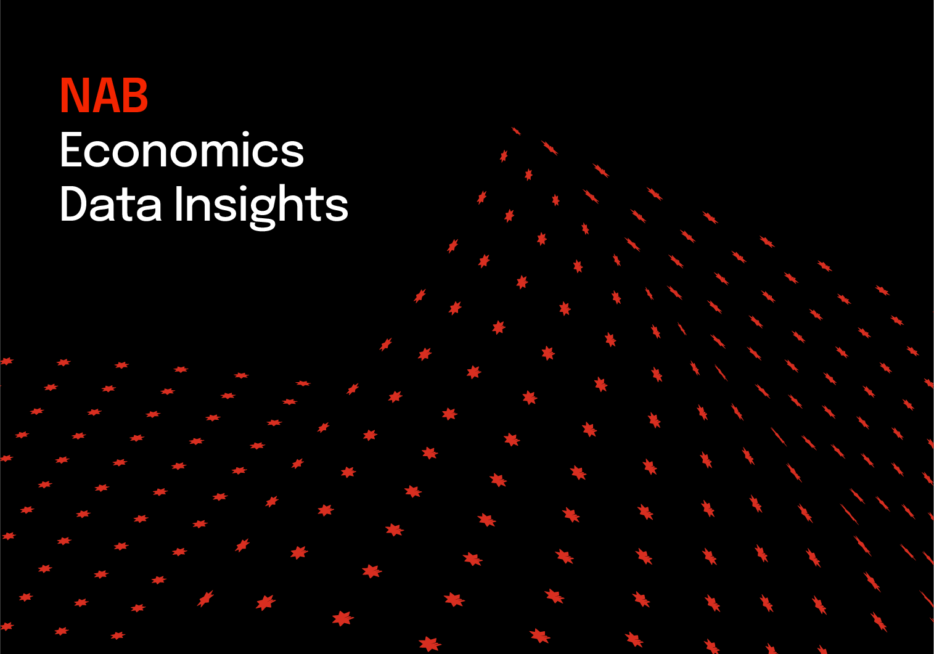Total consumer spending grew 0.7% in July


Insight
The NAB Residential Property Index rose to +6 in Q1’16 (+1 in Q4’15), but is still sitting below its long-term survey average (+13).

Sentiment among residential property professionals lifts in Q1 2016, after three consecutive quarterly falls. Eastern states out-performing, led by Victoria, while WA still falling. Foreign buyers are pulling back across most states as their focus continues to shift to Queensland (more than 1 in 5 new sales). NAB expects average national house prices in 2016 to rise by 1.5%, with unit prices to fall 1%.
The NAB Residential Property Index rose to +6 in Q1’16 (+1 in Q4’15), but is still sitting below its long-term survey average (+13).
According to NAB Group Chief Economist Alan Oster: “The latest results continue to paint a very mixed picture across the country, with positive sentiment in the Eastern seaboard states offsetting negative results in all other states.”
Overall, sentiment remains strongest in Victoria, which is also the only state tracking above its long-term average. Sentiment improved most in NSW in Q1 2016 and also lifted modestly in Queensland and SA/NT (but still negative). In contrast, it fell to a new survey low in WA which continues to trail the rest of the country by a considerable margin.
Survey expectations for national house price growth over the next year were broadly unchanged, but again there were notable differences across the states.
Expectations for price growth improved most in Victoria (1.7%) and are now highest in the country. They also improved in SA/NT, but remain quite weak (-0.1%). Expectations weakened a little in Queensland(1.2%) and were also revised down in NSW (-0.2%) and WA (1%).
Looking further out, house prices are expected to grow in most states in 2 years’ time, with Victoria (1.6%) and Queensland (1.4%) leading the way, with small gains also forecast for WA (0.4%) and SA/NT (0.3%). NSW is the exception, with the Survey predicting modest falls (-0.1%).
“At this point in the housing cycle, it is not clear whether the gains over first quarter of 2016 are pointing to an ongoing trend, or if it is simply a flash in the pan before the market peak, perhaps triggered by external factors” said Mr Oster.
Accordingly, NAB has marginally increased its average national house price forecast in 2016 to 1.5% (from 1%). Unit price forecasts are broadly unchanged, with large additions to supply expected to contribute to a decline of 1% over 2016.
By capital city, Brisbane and Melbourne are expected to be the best performers, with Brisbane house prices forecast to rise by 2.6% in 2016, while Melbourne increases 2.3%. Sydney house price growth is forecast to moderate significantly to just 1.5%. The Adelaide market is not expected to improve much in 2016 – an increase 0.2% roughly offsetting a similar fall in prices in 2015. Perth will remain very weak as prices decline by another 3%.
For apartments, flat to falling prices are expected across most capital cities. The worst declines are forecast to again be in Perth, as well as Melbourne (both -3%). The decline in Perth largely reflects economic conditions, while falls in Melbourne are expected as a result of added supply and weaker investor demand. Sydney unit prices will also be weaker (-0.6%), while Brisbane unit prices are expected to decline by a similar amount.
Another key take out from the Survey is the smaller role being played by foreign buyers in Australia’s housing market.
“Their market share of property sales in both new and established housing markets has been falling since the final quarter of 2015, which also coincides with the introduction of tighter legislation around foreign purchases of Australian property,” said Mr Oster.
In new property markets, the share of demand coming from foreign buyers fell to a 2½ year low of 11.8% and down from a Survey high of 16.8% in Q3’14.
Moreover, the survey is highlighting a shift in foreign buyers away from Victoria and NSW to Queensland, perhaps in search of better value.
Foreign buyers in Victoria and NSW accounted for around 1 in 10 new property sales in the March quarter, but in Queensland they purchased over 1 in 5 new properties.
Foreign buyers had previously accounted for around 1 in 3 new home sales in Victoria in late-2014 and around 1 in 5 sales in NSW in early-2015.
For further analysis download the full report:
© National Australia Bank Limited. ABN 12 004 044 937 AFSL and Australian Credit Licence 230686.